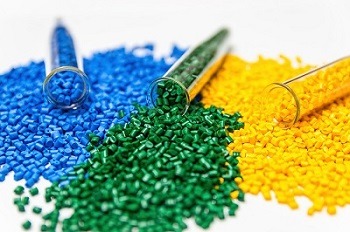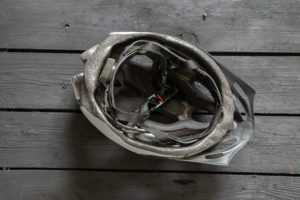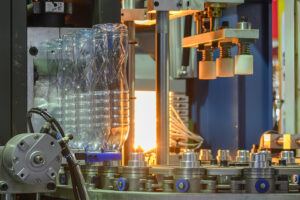Plastic manufacturers primarily use two methods for plastic molding. Despite the use of some similar materials, these two industrial processes are quite different from one another in key ways. In the first method, called plastic injection molding, manufacturers “inject” molten plastic resin into a three-dimensional mold space. This injected plastic settles into every nook of the mold, which forms the shape of a finished part. As the plastic material cools, it sets into a specific shape.
In the second method, plastic extrusion molding, manufacturers push melted plastic through a two-dimensional die or extrusion mold to create the desired shape or cross-section. Extruded parts often require some additional work after the extrusion process to reach a completed stage. Ultimately, each method has unique advantages and applications for different plastic products.
Let’s take a closer look at plastic extrusion vs. injection molding to learn how both processes work and why they are useful strategies for plastic manufacturing companies to use.
Plastic Injection Explained
Let’s start with plastic injection molding, which tends to be the better-understood and more common of these two plastic manufacturing methods for consumers. The process starts with a collection of plastic resin pellets, which manufacturers place into a hopper. Common resins often include ABS, polyamide, LDPE and others. The hopper feeds these pellets through a compression zone called the barrel, in which friction from a rotating screw creates heat to melt the plastic so that it can flow.
Once heated to the appropriate temperature, the molten plastic flows under pressure through a small nozzle into a mold. As the plastic fills the mold, it takes on the shape of that mold. Once it is cool and hard, the plastic will form a 3D product or part that perfectly matches the specifications demanded of the injection molding company. The part ejects from the mold for further finishing or assembly work and is ready to produce another part right away.
The Advantages of Injection Molding
There are several important advantages to plastic injection. First and foremost, this method can create three-dimensional plastic products, which other methods cannot. Injection molds and computer-aided design together allow for incredible variety and innovation in 3D products. Second, the process works relatively quickly even while it captures the complexities of the mold from unique shapes and curves to minute details in the design.
Finally, the method’s versatility enables manufacturers to use multiple types of plastic resin, including recycled materials, in manufacturing parts and products. As a result of all these elements, it is highly cost-effective for high-volume production of complex items.
Many products rely on plastic injection molding today. A quick sampling includes automotive components to children’s toys to cases for electronic devices. Injection molding plays a major role in automotive manufacturing, aerospace, and even in medical devices.
What is Plastic Extrusion?
To understand the difference between injection and extrusion, we only need to look at the word itself. “Extrude” means “to force out,” and that’s exactly what takes place in this type of manufacturing. Instead of filling an empty mold cavity with plastic resin, manufacturers force plastic through a shaping device called a die. Picture how children play with soft modeling compounds, squeezing and pressing the material into different shapes, and you have a good visual reference for how plastic extrusion works.
As with plastic injection, this type of manufacturing begins with a resin-filled hopper and a supply of melted plastic. Common extrusion materials include ABS, PE, and PVC. Instead of manufacturers injecting the melted material into a mold, they force the plastic through two-dimensional die openings found in extrusion molds. Once it cools, the plastic takes the form of a lengthy linear tube or piece, which manufacturers can cut into different lengths or cross-sections. There are many kinds of extrusion dies available. Some create thicker parts, while others use a combination of technologies to create very thin plastic films and sheets.
The Advantages of Extrusion Molding
Manufacturers prefer extrusion when the cross-section of a part is of particular importance. Complex cross-sections are not often achievable with injection molding technology. There is also often less waste in extruded products due to less “flash” material. Extrusion is best when manufacturers need to achieve certain properties due to specific resin combinations and when a continuous production run is preferable to the molding cycles used in injection processes.
Products typically come out of the mold fully formed. Extrusion allows for additional fabrication and alterations to the product, from cutting cross sections to shaping the pieces into specific product shapes (such as toothpaste tubes). Manufacturers can also punch, notch, or shape extruded products after cooling and dying processes. One additional benefit of the extrusion process is that the dies create very smooth finishes that are ideal for most commonly extruded products.
Typical use cases of products produced using a plastic extrusion mold technique are straws, pipes, window frames, and fence sections.
Extrusion and Injection Molding are Both Valuable Methods
The question of plastic injection molding vs. extrusion doesn’t have to be a battle — there is no plainly superior option because both processes have different end goals in mind. These methods have their own purposes and advantages, and both are valuable to plastic manufacturers seeking flexibility and cost-effectiveness.
Each method has a unique place in plastic manufacturing. Extrusion can’t create the complex 3D shapes that plastic molding can, and injection molding can’t achieve the atypical cross-sections that extrusion can produce. By understanding when and how to opt for either type of plastic molding, manufacturers can make smart decisions that lead to better production outcomes in the real world.
Contact Reliant Plastics
At Reliant Plastics, a US-based plastics manufacturer, our in-depth experience, hands-on understanding of plastic manufacturing methodologies and wide-ranging knowledge of modern resins make our team the ideal partner for your next project. Contact us today to learn more about our capabilities or to request a quote for your business.




